AUCTORES
Globalize your Research
Review Article | DOI: https://doi.org/10.31579/2693-2156/119
*Corresponding Author: Alireza Abedi, School of health Sciences, The University of Georgia, Kostava St. 77a, 0171 Tbilisi, Georgia.
Citation: Alireza Abedi, Faiza B. Khan, Siavash H. Chermahini, (2025), Recent Approach for Speeding up the wound Healing, J Thoracic Disease and Cardiothoracic Surgery, 6(3); DOI:10.31579/2693-2156/119
Copyright: © 2025, Alireza Abedi. This is an open access article distributed under the Creative Commons Attribution License, which permits unrestricted use, distribution, and reproduction in any medium, provided the original work is properly cited.
Received: 04 April 2025 | Accepted: 17 April 2025 | Published: 05 May 2025
Keywords: wound healing; wound angiogenesis; fast wound healing; growth Factors; stem cells therapy
Healing wounds is an important physiological process in the body followed by trauma, burn injuries, post-surgery complications or different diseases that can damage the skin and tissues. Millions of people struggle with their healing process every year and some of them pass away according to the World Health Organization (WHO). Wound healing is done by different processes that are divided into hemostasis/inflammation phase, proliferation phase, and remodeling phase. The pathophysiology of these processes and the factors affecting them is explained. There are two general factors including systemic and local factors contributing, both explained in this research. many resources have been reviewed regarding the factors that can enhance the healing process. All the information collected to fulfill one of the important purposes of this research. The enhancing factors which are discussed include therapeutic strategies for enhancing angiogenesis in wound healing like using growth Factors, Non-Growth Factor Protein Delivery, gene, and nucleic Acid-Based therapies for wound angiogenesis. Stem cells therapy one of the most recent topics that is being researched a lot in the wound healing subject and potentially gives hopes to healing enhancement, although more clinical trial and experiments need to be done especially on the human body to be able to get more specific results, hopefully can be proved and used to benefit the people who suffer from this problem around the world.
Accordingto the World Health Organization, 5.8 million individuals pass away from injuries each year [7].
Traumatic wounds (injuries that result in wounds) range from abrasions and minor skin cuts or rips to wounds that result in substantial tissueloss or damage,as well as harm to bone and internal organs [7].
The mechanism of the injuryaffects how much tissue damageoccurs. Traumatic wounds can be brought on by animal bites, crush injuries, blast injuries, burns, degloving injuries (when a largeamount of skin gets torn from the deeper tissues), and penetrating injuries(like stabbings and gunshots). The requirement for immediate assessment and management of concurrent severe, life-threatening injuries frequently dictates the necessity for early management of traumatic wounds [7].
Our skin, a highly adapted,multifunctional organ that shields us against a daily onslaught of chemical, physical, and ultraviolet radiation challenges, was produced via millennia of evolution. It should hence be no surprise that our skin has sophisticated reparative systems that enable it to heal fast and effectively. The harsh external environment frequently causes injuries to the skin. Despite having a strong natural capacity for repair, a person's injury response could become compromised in many ways at the cellular level, impairing wound healing. The pathological alterations in the body that are most frequently the cause of this attenuation include those brought on by uncontrolled diabetes or senior age. Indeed, the two main risk factors for having a chronic wound are age and diabetes (i.e., a wound which takes more than 12 weeks (about 3 months) to heal Unfortunately, there is a large clinical need for treatment for these chronic wounds, which mostly include venous ulcers, pressure sores, and diabetic foot ulcers.
They are also significantly worseningglobally. Our skin is designedspecifically to interactwith the outside world and performs several crucial homeostatic tasks, such as controlling thermostability and perceiving external stimuli. Importantly, the skin serves as a major defense barrier, guarding against mechanical, chemical, thermal, and photic harm to internal tissues as well as desiccation [25].
Wound healing is a crucial but challenging process that involves several overlapping but sequential phases, including hemostasis/inflammation phase,proliferation phase, and remodeling phase [24]
Following a skin injury, the exposed sub-endothelium, collagen, and tissue factor stimulate platelet aggregation, whichleads to degranulation and the releaseof chemokines (chemokines) and growth factors (GFs), which form the clot [24].
The first cellsto show up at the site of an injury,neutrophils clear away debris &bacteria to provide a favorable environment for wound healing. Following, macrophages gather, aid in the phagocytosis of germs, and cause tissue damage [24]
Typically, the hemostasis & inflammatory phase lasts 72 hours (about 3 days). The accumulation of many cells and an abundance of connective tissueare characteristics of the subsequent proliferative phase. Fibroblasts, keratinocytes, even endothelial cells are present in the wound. To replace the initial clot formation, the extracellular matrix(ECM), which contains proteoglycans, hyaluronic acid, collagen, & elastin, produces granulation tissue [24].
The remodeling phase,which comes after the apoptosis of existing cells but beforethe synthesis of new cells, is the final stage of wound healing. This phase, which lasts for a few months or years, is crucial for the gradual breakdown of the abundant ECM and the immature type III collagen and the development of the mature type I collagen. Any deviation during this phase could result in chronic wounds or excessive wound healing [24].
Trauma affects millions all over the world, these traumatic injuries often have severe outcomes such as infection, sepsis and even mortal outcomes, hence it is important to know factors which can help with increasing the speed of the normal physiological aspects of wound healing, as well as target all types of wounds we see on a day to day basis from homes to the emergency room (E.R),in order to come up with a faster and much more effective treatmentplan benefitting most of the ER physicians, trauma facilities, paramedics and rescue teams, and overall patients.
The time of acute injury will herald the start of the wound healing process, the initial response to injury that causes damage to the blood vessels and extravasation of red blood cells from the intravascular space,is hemostasis to prevent exsanguination from vascular damage [10]. This is achieved by vascular contraction and by formation of a fibrin clot. Platelets are the principal cell type involved in hemostasis and fibrin clot formation; they are activated by vascular endothelial damage. The surface receptors on the platelets interact with the extracellular matrix proteins (fibronectin, collagen and von Willebrand factor), inducing the cascade that eventually leads to the coalescing of platelets to form an insoluble clot (eschar) of fibrin, fibronectin, vitronectin and thrombospondin forms [25]. Although the most basic functionof this clot is to prevent bleeding, it also serves as protection from bacterial invasion into the bloodstream, acts as a scaffold for incoming immune cells and releases proinflammatory cytokines such as transforming growth factor (TGF)-β, platelet-derived growth factor (PDGF), fibroblast growth factor (FGF), and epidermal growth factor (EGF) to attractimmune cells to the area of injury [25]. After a brief periodof vasoconstriction, vasodilation occurs which will cause local hyperemia and edema [17].
Once bleeding is controlled there are 3 main phases of the wound healingprocess that proceed.
Inflammation
Innate inflammation is the primary defense against pathogenic inflammation and is characterized by the sequential infiltration of neutrophils, macrophages, and lymphocytes [5]. The proinflammatory such as mast cells, Langerhans cells, T cells and macrophages, are activated by the release of damage-associated molecular patterns (DAMPs) by necrotic cells and damaged tissue, and pathogen-associated molecular patterns (PAMPs) from bacterial components. As well as acting as chemoattractant signals for proinflammatory cells, these proinflammatory molecules enhance vasodilation which, along with the expression of endothelial cell adhesion molecules, such as selectins, facilitates neutrophil and monocyte adhesion and diapedesis [25]. Neutrophils being the initial recruits to the injuredarea, arrive within the first 24 hours and persist for 2 to 5 days, the chemotactic movement is mediated by the release of interleukin 1 (IL-1), tumor necrosis factor-alpha (TNF-α) and bacterial endotoxins, such as lipopolysaccharide (LPS)[25]. They initiatephagocytosis which servesto kill localbacteria and debride necrotic tissue and is mediated by the release of reactive oxygen species (ROS).
Phagocytosis is then continuedby macrophages.
Macrophages, which are induced by LPS and interferon-gamma (IFN-γ), play a number of roles in the inflammatory phase, with their primary role being phagocytosis. They clear apoptotic cells (including neutrophils), replacing them as the primaryinflammatory mediator and initiating the transition out of the inflammatory phase. These macrophages, as they phagocytose the apoptotic cells, transition to a reparative state that stimulates keratinocytes, fibroblasts, and angiogenesis to promote tissue regeneration [14][16][5]. Macrophages also play a role in the release of proinflammatory cytokines that recruit and activate additional leukocytes early in the inflammatory phase [5]; later in the inflammatory phase, they also enhance their anti- inflammatory role by releasing growth factors that promote re-epithelialization, fibroplasia, and angiogenesis [25].
Although neutrophils and macrophages are the principal characters involved in the inflammatory phase of wound healing, the role of T cells in this phase cannot be ignored. Circulating T cells are recruited to resolve inflammation and peak during the late- proliferative/early-remodeling phase. The precise role of the T cell in this process has not been delineated, however studies have shown decreased T cell concentration and delayed T cell infiltration to be associated with impaired wound healing [5].
Vascular restoration takesplace through two methods: Angiogenesis and Vasculogenesis.
Angiogenesis is a process where new vessels sprout from the endothelium of the adjacent, mature vessels, whereas vasculogenesis involves the de novo formation of vessels through stem cell (endothelial progenitor cells) differentiation [17]. The mobilization of these stem cells begins after injury by Nitric oxide (NO), VEGF, and matrix metalloproteinases (MMP),mainly MMP-9.
Keratinocytes are activated by changes in mechanical tensionand electrical gradients, as well as exposure to pathogens, cytokines and growth factors can migrate laterally across the wound to reform the epidermal layer in a process termed re-epithelialization. The keratinocytes migrate across the wound bed through their interactions with structural proteins of the preliminary matrix, particularly with MMP-1 and MMP-9. Migration of keratinocytes on opposing edges continues until they establish physical contact with each other.
The final step in the phase is the replacement of the provisional fibrin-rich matrix with granulation tissue by fibroblasts. The granulation tissue consists of fibroblasts, granulocytes, macrophages, capillaries, and loosely organized collagen bundles and classically possesses a red huedue to its highly vascularnature [17]. These fibroblasts respond to a myriad of signaling molecules, including transforming growthfactor (TGF-β) and PDGF, whichinduces them to either become pro-fibrotic, laying down ECM proteins, or differentiate into myofibroblasts which drive wound contraction [11][25].
This is the final phase of wound healing, beginning on day 21 and lasting up till a year post-injury. cessation of granulation tissue formation and maturation of the wound begins, collagen type III is replaced by collagen type I, acting to increase the tensile strength of the developing scar. Proteoglycans aid the construction of mature, cross-linked collagen fibrils and act as a conduit for cell migration. However, the integrity and architecture of the scar extracellular matrix never fully resembles that of unwounded skin, the collagen fibrils in the dermis of the scar adopt large parallel bundles, while a basket weave orientation is observed in uninjured skin fibrils [26][27][25]. The collagen synthesis continues for up to 5 weeks, oxygen and ascorbic acid are essential to this process, with hypoxia or vitamin C deficiency leading to decreased wound strength. MMPs have significant roles in the remodeling of local matrix microenvironments, however,in this phase it is imperative to maintain a precise balance between synthesis and degradation of the new tissue and this is achieved through temporal regulation of key MMPs [25].
Additionally, heightened expression of TGF-β and mechanical tension stimulate differentiation into myofibroblasts. These types of fibroblasts are characterized by an abundance of alpha-smooth muscle actin (α-SMA) allowing for generation of a contractile force in the process of wound contraction. This force opposes the wound edges and allows for wound closure, after the wound becomes fully epithelialized, the myofibroblasts will undergo apoptosis.
Persistenceof myofibroblasts afterepithelialization leads to fibrosis and scar formation [11]
[17]. Finally, the angiogenic responseceases and the acute metabolicactivity in the wound concludes.
There are some factors which usually slow down the process of healing like some diseasesor conditions like aging etc... These factors are dividedto systemics and local factors that have different physiologic effects on the body.
A chronic wound may develop when wound healing does not proceed normally, which places a tremendous strain on both the patient and the healthcare system. An individual diabetic ulcer is thought to cost close to $50,000 USD [6]. Some of the systemic factors affecting wound healing include non-modifiable factors like age, gender and some of the modifiable factors include diabetes, anemia,alcohol consumption, smoking,obesity, medications, and malnutrition.
According to the World Health Organization (WHO) the old population—defined as those over 60—is expanding more quickly than any other age group. Older age is a major risk factor for poor wound healing. Numerous cellular and molecular investigations conducted on humans and animals have looked at age-related alterations and delay in wound healing.It is well known that in healthy adults, the effects of aging simply temporarily slow wound healing, not affectingthe healing processitself [5]. An altered inflammatory response, such as delayed T-cell infiltration into the wound area with changes in chemokine production and decreased macrophage phagocytic capacity, is linked to delayed wound healing in the elderly [5]. androgens testosterone and 5-dihydrotestosterone (DHT) and their steroid precursor dehydroepiandrosterone (DHEA) appear to have considerable influence on the wound-healing process is one explanation for this [5]. By controlling a number of genes related to regeneration, matrix synthesis, proteaseinhibition, epidermal function,and the genes predominantly linkedto inflammation, estrogen influences wound healing [5]. As a result, woundsbrought on by peripheral vasculardisease as well as situations where vascular impairment may be a factor, like a diabetic ulcer, require special attention [6].
Diabeteshas a complicated pathophysiology combiningvascular, neuropathic, immunological, and metabolic components that leads to impaired recovery [20].
Hyperglycemia is associated with stiffer bloodvessels, which impedeblood flow and lead to microvascular dysfunction, which results in less oxygen reaching the tissues [20].
Diabetes-related blood vessel changesare also responsible for decreased leukocyte migration into the wound, making it more susceptible to infections [20].
Even the presence of high blood sugar can impair leucocyte performance. Peripheral neuropathy can also cause numbness and a loss of pain perception, which can resultin creation of chronic wounds that are not promptly identified and treated [20].
conditionsof low oxygen tension, not just will there be more necroticdebris to supportbacterial development, but the immune system's main defense mechanism against these germs is also weakened.
Alcohol use hinderswound healing and increases the risk of infection, according to clinical data and animal trials [5].
Alcohol use reduceshost resistance and drinkingalcohol while intoxicated at the time of an injury increases the likelihood of infection in the wound [5]. In response to an inflammatory stimulus, short-term acute alcohol intake suppresses the release of pro-inflammatory cytokines. In acute alcohol exposure, there is a correlation between lower neutrophil recruitment and phagocytic function and a higher likelihood of post-injury infection [5].
Apart from the increased risk of infection, any kind of exposureto ethanol influences the proliferative phase of healing [5].
By suppressing the early inflammatory response, wound closure, angiogenesis, and collagen formation, as well as changingthe protease balanceat the wound site, ethanolexposure can result in poor wound healing [5].
Patientswho smoke after surgery experience a slower rate of wound healing as well as an increase in a number of problems, including infections, wound rupture, anastomotic leaking, wound and flap necrosis, epidermolysis, and a reduction in the tensile strength of wounds [5].
Given that nicotinecan reduce tissue blood flow due to its vasoconstrictive actions, it is likely that nicotine reduces oxygen delivery via tissue ischemia [5].
Nicotine promotes sympathetic nerve activity, which releases adrenaline, which reduces tissue blood perfusion and produces peripheral vasoconstriction. Additionally, nicotine makes blood viscous due to decreased fibrinolytic activity and increased platelet adhesiveness. Smoke from cigarettes contains carbon monoxide, which contributes to tissue hypoxia in addition to nicotine's effects. A smaller percentage of oxygenated hemoglobin is present in the bloodstream as a result of carbon monoxide's aggressive, 200 times stronger attraction for hemoglobin than that of oxygen [5].
Numerous illnesses and health issues, such as coronary heart disease, type 2 diabetes, cancer, hypertension, dyslipidemia, stroke,sleep apnea, respiratory issues, and delayedwound healing are all known to be made more likely by obesity.Obese people typically experience wound complications, such as venous ulcers, pressure ulcers, hematoma and seroma development, skin wound infection, and dehiscence [5].
Adipose tissue was once thoughtto serve primarily as a caloricreserve. However, more recent research has shown that adipose tissue secretes a wide range of bioactive compounds known as adipokines. It is generally known that both adipocytes and the macrophages found inside adipose tissue create bioactive molecules such as cytokines, chemokines, and hormone- like substances like leptin, adiponectin, and resistin. The immune system and inflammatory response are significantly influenced by adipokines [5].
Even if there is not any concrete evidence to support it, the detrimental effects of adipokines on the body's immunological response appear likely to affect the healing process. Obesity has been linkedto altered peripheral cytokine levels, reducedlymphocyte proliferation, and impaired peripheral blood mononuclear cell function [5].
Generally, the oxygen supply and tension in the wound bed are crucial factors in physiologic wound healing. To interact with a variety of cytokines, supply the cells that are actively proliferating, and act as an effector again for neutrophil respiratory burst, oxygen is necessary for wound healing. According to estimates, for a wound to heal, the tissue oxygen tension must be at least 20 mm (about 0.79 in) Hg [6]. Oxygen tensions as low as 5 mm (about 0.2 in) Hg have been observed in non-healing lesions[6]. These effectsappear to be additive; in somedeficiencies in woundhealing are relatedto sex hormones for instanceaged males have been found to heal acute wounds more slowly than aged females. The fact that male
Numerous drugs have the potential to alter how well wounds heal, including those that interfere with platelet function, clot formation, inflammatory responses, and cell proliferation [5].
Drugs called glucocorticoids Systemic glucocorticoids (GC), which are often used as anti-inflammatory medications, are well known for preventing the healing of wounds by suppressing cellular wound responses such fibroblast growth and collagen synthesis as well as overall anti-inflammatory actions.Systemic steroids produceincomplete granulation tissue and decrease wound contraction in the healing process of wounds [5].
A crucial transcriptional factor in the healing of wounds, hypoxia-inducible factor-1 (HIF-1), is also inhibited by glucocorticoids [5].
The majority of chemotherapeutic medications aim to block angiogenesis, fast cell division,and cellular metabolism, hence blocking many of the processes necessaryfor effective wound healing. These drugs prevent the production of DNA, RNA, or proteins, which reduces fibroplasia and neovascularization of wounds [5].
Chemotherapeutic medicines slow down cell migration into wounds, reduce the creation of the early wound matrix, reduce collagen production, reduce fibroblast proliferation, and prevent wound contraction [5].
The rate at which surgicaland trauma woundsheal can be significantly impactedby malnutrition or specificdietary deficits. Patientswho are malnourished and have chronic or slow-healing wounds frequently need specialized nourishment. The healing process can be impacted by energy, carbohydrates, protein, fat, vitamins, and mineral metabolism [5].
Local factors
Oxygen
Oxygen is arguably the most essential element involved in cellular metabolism. It is crucial in the production of energy via ATP and plays a vital role in the wound healing process, for example, the synthesis of collagen by fibroblasts, which needed for wound closure requires the hydroxylation of proline and lysine, which cannot be accomplished without the presence of oxygen during the reaction. Proper oxygenation of the wound has been found to reduce the risk for infection [22], though delayedwound closure to prevent infectionwith anaerobic bacteriaand through oxygen mediated superoxide production by polymorphonuclear leukocytes. Proper oxygen supply during the wound healing process has also been linked to induction of angiogenesis, increased keratinocyte differentiation, migration, and re-epithelialization, enhancement of fibroblast proliferation and collagen synthesis, and promotion wound contraction [5]. A study showed that animals breathing 10 percent oxygen should a significant decline in wound strength when compared with the control at 20 percent, however the group that received 40 percent oxygen had increased wound strength as compared with the control group [8], once again confirming the significant role that oxygen plays in the wound healing process.
Proper oxygen supply can be a difficult balance to achieve, due to vascular disruption from injury and the increased consumption by metabolically active cells in the healingprocess, the microenvironment of wounds is quite hypoxic. In addition to that, conditions such as peripheral vascular disease, obesity, diabetes, and advanced age can lead to compromised vessels,causing impaired blood flow and impaired wound healing. Hypoxiacan also be caused by radiation induced vasculitis in cancer patients [22].
Although it has been established that lack of oxygen impairswound healing, this relationship is not completely a straightforward one, temporary hypoxiais also known to enhance wound healing [5]. This is achieved through the hypoxia mediated production of cytokines such as PDGF, TGF-β, VEGF, tumor necrosisfactor-α (TNF-α), and endothelin-1 by macrophages, fibroblasts, and keratinocytes [5].
A foreign body, which has any abnormal mass or structure in the tissues will prevent healing of the wound, if present.The main problemscaused by the presence of foreign bodiesin a wound are their role as irritants and their relation to infection. Absorbable materials can promote inflammation which causes accumulation of free fluid and can act as a medium for bacterial growth, leading to infection of the wound site. Even with antibiotics, the risks for recurrence of infection are dependent on the porosity of the foreign material, porous materials can harbor bacteria, allowing re-infection of the site after the course of antibiotics [8].
The level of irritation caused by a foreign body and how well it is tolerated can be determined by the material. Reactive metals such as iron can show delayed reaction due to development of corrosion that causes irritation; organic materials such as wood, fibers from clothing, soil and grass are not at all well tolerated and often lead to a highly contaminated wound and development of a bacterial infection, even withoutbacterial, chronic inflammation is observed until the offending material in removed. Talcum powder from the inside of sterile gloves, if introduced into a wound can lead to formation of a granuloma, due to the insolubility of the talc. Insoluble materials like glass and gravel can remain encapsulated in the tissues, causing little to no reactions due to their inert nature. As mentioned above, porous materials are not very well tolerated as they act as a medium for bacterial growth and proliferation. The surface of the foreign object can also play a role in how well tolerated it is, non-reactive metals with smoothsurfaces can remainin the tissues, causes littleto no reactions, as seen in medical devices such as metal plates and screws,however, metals with rough surfaceswill tend to cause more irritation to the surrounding tissues, leading to inflammation [8].
The growth and proliferation of microbes in a wound is one of the most common reasons for impaired wound healing [5]. Introduction of bacteria into a wound can be due to migration, though the opening in the skin, bacteria is able to move from an area it is normally present (e.g., on the surface of the skin) into the tissues where it is an abnormal presence; bacteria can also be introduced through the contamination of the wound by foreign material. Infection is seen as an imbalance in the normal equilibrium of bacterial quantity, the development of infection, especially in a surgical patient is determined more by the quantity of bacteria than the absolute presence of bacteria [19]. The development of an infectioncan also be determined by the species present, but also by the host immune response, the number of different species present and the virulence of the organisms [3]. The state of infection and replication statusof the bacteria present in the wound determines if the wound is classified as contaminated, colonized, or infected. A wound with non-replicating microorganisms is referred to as “contaminated,” whereas colonization indicates the presence of replicating microbes. Infected wounds can be further classified as local infections, with microbe replication and initial local tissue response occurring and invasive, with major host injury [3][5]. The presence of bacteria can impair the wound healing process by arresting the wound in the inflammatory phase, leading to the formation of a chronic wound. Under normal conditions, inflammation is a self-limiting process, with the inflammatory process acting in a beneficial manner to debride the wound, however, when this process becomes chronic, it serves to only cause further injury to the wound site and prolong inflammation [13]. This can be achieved through the release of bacterial endotoxins that can
cause a prolonged elevation of cytokines such as interleukin-1 (IL-1) and TNF-α. Chronic inflammation from infection induces tissue breakdown though the release of matrix metalloproteinases (MMPs)that degrade the extracellular matrix.A reduction in the production of protease inhibitors is also observed which can lead to the increased breakdown of growth factors that promote wound healing [3][2][5]
The development of biofilm is also a crucial factorin the hindrance of wound healing.
Biofilms consist of many bacteriaclustered together to form dense,mat-like structures that cover the wound's entire surface. The increased susceptibility to infection and the presence of necrotic tissue allowingeasy bacterial attachment, make chronic woundsan ideal environment for biofilm formation. Mature biofilmsact as a protective microenvironment for bacteria, makingthem more resistant to antibiotic intervention [3].
The symptoms of venous insufficiency are due to venous hypertension, this can be a result of valvular dysfunction. Valve failure may occur due to a weakening of the valves due to varicose veins, or damage to the deep veins secondary to venous thrombosis, trauma, or obstruction [21]. Inflammation from recruited leukocytes, mast cell degranulation as well as the activity of matrix metalloproteinase inhibitor and fibroblast differentiation into myofibroblasts participate in vain wall remodeling and varicose formation [18]. Chronic inflammation, maintained by proinflammatory factors:IL-1α, IFN-γ, and TGF-β1, as well as incompetent blood flow which promotes thrombus formation, leading to further fibrosis and valvular destruction, also contributes to the impaired wound healing seen in this condition. [18]
Complications from hypoxia due to venousinsufficiency can also result in formation of a wound, venousinsufficiency ulcer. The mechanism by which venousinsufficiency delays wound healing also affects this type of wound, causing it to be a chronic wound.
Enhancing the healing process is a broad topic to be discussed in this research, so it is better to break it down into various aspectsfor better understanding of its purpose.Enhancing the healing process in non-healing wounds can be different from people with normal body system and normal wounds.
Enhancing the process in non-healing wounds sometimes works by just bringing the impaired system function back to normal, for example the most common cause of chronic, non- healing ulcers that put patients at higher risk for limb amputation is diabetes [23]. Reduced ability to regenerate microvasculature through the process of angiogenesis is a significant factor in non-healing wounds in diabetes and peripheral vascular disease [23]. This disruption of the normal healing process is a major therapeutic target for developing new treatments for non- healing and ischemic wounds because it contributes to the dysfunctional healing response [23]. So, some treatments like the delivery of growth factors, gene therapy, stem cell therapies, and mechanical/pressure-based stimulation have all been used as techniques and dressings with the aim of enhancing chronic wound healing [23]; to just help with the healing process to back to normal like if we consider zero as normal, coming from minus ten to zero that count as a progress, an enhancement. But enhancing the healing process in people who are in normal condition (already a zero) is somehow another deal because we want to make the progress from zero to +10 although there might be some correlation between these types aswell, but the goal is enhancing the normal healingprocess farther more like using Adipose-Derived Stem Cells
(ADSCs) and Mesenchymal Stem Cells (MSCs). There is not that much research and experiments have been done to show significant effecton the time of healingprocess, but we hope we can go farther in future as this is one of the important purposes of this research.
The non-healing nature of diabetic foot ulcers and other chronic wounds is largely due to reduced angiogenesis. There are several theories to explain why the angiogenesis in these chronicwounds is reduced.Compared to non-diabetics and diabetics withoutfoot ulcers, diabetic patients with foot ulcers have higher circulatory levels of PEDF in their plasma. Additionally, there is a notable decrease in syndecan-4 and glypican-1 in diabetic skin, two essential cell surface heparan sulfate proteoglycans required for efficient FGF-2 and other growth factors binding to their appropriate receptors. Similarly, venous leg ulcer wound exudates have anti- angiogenic qualities despite increased expression of angiogenic factors. These analyses are in line with a proteomic analysis of venous leg ulcer exudates, which discovered increases in anti- angiogenic proteins in non-healing ulcers. Additionally, there were higher levels of soluble VEGFR-1 and VEGF-A proteolysis in chronic venous ulcers, which may be used to inhibit VEGF-A activity [23].
Growth Factors
Researchon the use of growthfactors for promoting angiogenesis and improving wound closure in chronic wounds has been ongoing for many years. Endogenous growth factors are necessary for efficient wound healing and play a crucial role in directing the wound-healing process. While the delivery of exogenous growth factors has demonstrated benefits for wound closure and angiogenesis in animal studies, nearly all growth factor-based agents for wound healing have not demonstrated definite benefits for improving wound healing in patients in clinical trials. One theory for why these trials failed is that as people age and develop vascular disease, they become resistant to the effects of angiogenic growth factors. It is also unclear whether a single growth factor therapycould promote wound healing. Clinicaladoption of these treatments has been slowed by the inconsistent findings from clinical trials and the therapies' prohibitive costs, but work is still being done to create more potent protein therapies for wound healing [23].
In preclinical models of wound healing, many other proteins showed therapeutic effects on wound angiogenesis. One important example of a protein hormone that has been demonstrated to regulate angiogenesis and wound healingis insulin. By promoting angiogenesis, the delivery of insulin from PLGA microspheres enclosed in an alginate sponge dressing improved healing and decreased scarring from burn injuries in rats. Additionally, insulin injection into mouse skin caused angiogenesis, indicating that it is a viable option for ischemic wounds. Additionally, topical insulin delivery to diabetic skin ulcers facilitated faster wound healingin a double-blind, placebo-controlled clinical trial. This finding suggests insulin as a less expensive option to growth factor therapies [23]. It has been demonstrated that the hormone erythropoietin (EPO), a non-growth factor protein, promotes angiogenesis. EPO topical application or infusion was shown to significantly increase angiogenesis rates in mice and rats compared to the control group in a model of second-degree burn injury where a massive portion of the original vasculature was lost or severely damaged. Additionally, compared to the control group, the EPO-treated rats' wound closure rates were accelerated, with an average wound closure rate of 98.8% by day 7. Additionally, EPO has been used to treat ischemic injuries, where significant revascularization is necessary to reestablish adequate blood flow, and it has been hypothesized that EPO and VEGF collaborate to encourage angiogenesis at the site of the wound. On the other hand, EPO has been linked to tumor angiogenesis in hepatic tumors and Lewis lung carcinoma tumors, so similar precautions should be taken as with many growths factor therapies [23]. Another protein known as stromal-cell derived factor-1 (SDF-1) has been found to control angiogenesis by attracting endothelial progenitor cells (EPC) to the site of the wound and fostering sustained cell proliferation. The local recruitment of monocytes with anti- inflammatory activity has been shown to be promoted by SDF-1, a potent chemotactic agent for monocytes like macrophages. This enhances the growth of the local vasculature. SDF-1 has also been shown to encourage bMSC and EPC chemotaxis to wound sites. The movement of bMSCs and EPCs (Endothelial Progenitor Cells) encourages vascularization, which quickens the healing of wounds. With a three-fold increase in bloodvessel formation compared to a control group that did not receive SDF-1, SDF-1 has also been shown to promote angiogenesis in a diabetic mouse model. Full thickness skin wounds that received SDF-1 delivery experienced a markedly faster rate of wound closure and vascularization. Finally, Vgesjö et al., took a novel approach. plasmid- encoded SDF-1-transformed lactobacilli. In mouse models of hyperglycemia and peripheral ischemia, these bacteria were then topically applied to wound sites, hastening wound closure, and improving the effectiveness of bioavailable SDF-1 [23].
In angiogenesis during wound healing, gene regulation is essential. Non-coding RNAs called microRNAs (miRNAs) are about 21–25 nucleotides long and play a significant role in regulating gene expression by binding to target mRNA and either suppressing or causing mRNA degradation. After inflammation, gene expression is controlled to promote angiogenesis and tissue remodeling. Numerous aspects of wound healing, including cell proliferation and migration, collagen biosynthesis and network maturation, inhibition of neovascularization, and improved blood vessel growth, have been shown to be regulated by miRNAs. MiRNAs are a target of interest in wound healing due to their ability to increase or suppress gene expression. Several miRNAs have been found to specifically control angiogenesis during wound healing. The expression of the pro-angiogenic proteins VEGF, GATA2, Ang-2, and PDGF-B as well as the anti-angiogenic protein TSP-1 is regulated by these miRNAs, which also affect vessel formation and maturity, migration, scar reduction, and migration regulation. Overall, it is becoming more obviousthat miRNAs exert significant controlover angiogenesis in the context of wound healing [23]. Methods for delivering small molecules to promote angiogenesis and restore impaired wound healing in animal models
Wound healing requires a dynamic angiogenic response. Many researchers have concentrated on the creation of novel strategies for therapeutic angiogenesis to assist in the healing of chronic wounds. Small-molecule treatments that encourage angiogenic activity and can modulate the repair process have been developed in response to recent advancements in our understanding of the biology of chronic wounds. These treatments have exciting potential for clinical use. In the past, diabetic impaired wound healing in animal models was treated with small molecules. One molecule crucial to wound healing has been identified as nitric oxide (NO). Following skin damage, NO levels significantly rise and then gradually fall as the wound heals [23][6]. It is also has been researched that using other compounds like Adenosine Triphosphate, Statins, Deferoxamine, Hyaluronan Oligosaccharides, can help the healing process in different physiological and pathological ways, aswell as Naturalcompounds which is another objective of wound therapy to encourage adequate healing while minimizing scar complications like unbalanced collagen synthesis, in addition to tissue healing and regeneration. Traditional Chinese Medicine has long used astragaloside IV (AS-IV), one of the main activecomponents in Astragali Radix,which is derivedfrom the root of Astragalus membranaceus, for its curative and anti-scarring properties [23]. Dermatological conditions like skin lesions, eczema, burns, and hypertrophic scars have responded well to herbal treatments [1]. One illustration is the plant Centella asiatica, which contains several active substances found to aid in wound healing, including centelloids, asiaticoside, madecasoside, asiatic acid, and madecassic acid [1].Previous studies [1][9] demonstrated that ointments containing different doses (0.1%–1%, w/w) of these compounds or a combination improve wound healing. Asiaticoside, which is derived from Centella asiatica, has a variety of pharmacological effects, such as the ability to promote angiogenesis and speed up the healing process after injury [23].
A new and promising method for treating diseases that are not well-suited for conventional therapies is stem cell therapy.To promote angiogenesis and wound healing,various stem cell types have been investigated.
Nearly all adult organs, particularly adipose tissue (AT), have been found to contain multipotent mesenchymal/stromal stem cells (MSCs) as residual stem cells. These cells are isolated within the stromal vascular fraction (SVF) and exhibit the typical mesenchymal cell characteristics in vitro. These cells are more proliferative, have immunosuppressive characteristics that can inactivate T cells, and are commonlyknown as adiposederived stem cells
(ASCs or ADSCs).They can be isolated in a less invasive and more consistent manner.
Compared to bone marrow (BM)- and umbilical cord (UC)-MSCs, ADSCs were shown to differentiate into the adipogenic lineage; however, their multipotency is actually more appreciated for ectodermic and endodermic tissue repair [12]. Within subcutaneous tissue, ADSCs have recently been found. We can anticipate that they will be essential to skin regeneration and repair because of their presence. There is proof that ADSCs play a crucial role in preserving the structure of skin tissue, even when acting as a physiologic response to local injury or as mechanisms for skin rejuvenation by seeding younger cells into the epidermis' outer layer. These cells, which were located in the basal layer and self-renewed and differentiated to continuously settle the epidermis with keratinocytes, fibroblasts, and melanocytes, may have an impact on the physiological traits of the injured skin [12]. They also displayed a high capacity for migration and were drawn to the sites of wounding. It has been demonstrated that ADSCs can differentiate into keratinocytes, dermal fibroblasts (DF), and other skin cells [12].
The compound's ability to function in the challenging environment of a poorly healing wound is necessary for the development of effective therapeutics for enhancing wound angiogenesis, particularly for non-healing or complex wounds. Numerous substances have demonstrated great promise in promoting wound healing and angiogenesis in animal models of wound healing, as was covered in this review. In the past, many wound healing therapies that were effective in preclinical modelsultimately failed to benefit patientswhen they were tested in clinical trials. By both replacing, repairing, and regenerating dead or damaged cells and by allowing their turnover to provide continuous recruitment of mature, specialized cells from the basal epidermal layer to its outer layer, resident ADSCs within the skin are thought to be key regulators and play crucial roles in tissue repair and regeneration The overall goal of the strategies for treating wound defects are to ensure patient satisfaction in terms of both functionality and aesthetics. Advancements using skin cellular substitutes, biomaterials, and fat graft have been promising in supporting skin repair due to their excellent capacity to proliferate, differentiate, and migrate along with their immunomodulatory effect. Regarding the makeup of the repaired dermis and epidermis, it remained challenging to ensure complete and functional generation. However, ADSCs are more advantageous in contributing to the biology and function of skin cells the more enriched secretome they can secrete. According to reports, these growth factors autoactivate ADSCs and start the various mechanisms needed for wound healing at different stages [12]. However, effective wound healing is ultimately a temporal process that has several potential vulnerabilities to disease or infection. Although many factors and ways were reviewed in this research for enhancing the healing process, still all of them need more research and experiments especially on humans to be able to increase the speed significantly to benefit the people who are suffering from this problem.
Clearly Auctoresonline and particularly Psychology and Mental Health Care Journal is dedicated to improving health care services for individuals and populations. The editorial boards' ability to efficiently recognize and share the global importance of health literacy with a variety of stakeholders. Auctoresonline publishing platform can be used to facilitate of optimal client-based services and should be added to health care professionals' repertoire of evidence-based health care resources.

Journal of Clinical Cardiology and Cardiovascular Intervention The submission and review process was adequate. However I think that the publication total value should have been enlightened in early fases. Thank you for all.

Journal of Women Health Care and Issues By the present mail, I want to say thank to you and tour colleagues for facilitating my published article. Specially thank you for the peer review process, support from the editorial office. I appreciate positively the quality of your journal.
Journal of Clinical Research and Reports I would be very delighted to submit my testimonial regarding the reviewer board and the editorial office. The reviewer board were accurate and helpful regarding any modifications for my manuscript. And the editorial office were very helpful and supportive in contacting and monitoring with any update and offering help. It was my pleasure to contribute with your promising Journal and I am looking forward for more collaboration.

We would like to thank the Journal of Thoracic Disease and Cardiothoracic Surgery because of the services they provided us for our articles. The peer-review process was done in a very excellent time manner, and the opinions of the reviewers helped us to improve our manuscript further. The editorial office had an outstanding correspondence with us and guided us in many ways. During a hard time of the pandemic that is affecting every one of us tremendously, the editorial office helped us make everything easier for publishing scientific work. Hope for a more scientific relationship with your Journal.

The peer-review process which consisted high quality queries on the paper. I did answer six reviewers’ questions and comments before the paper was accepted. The support from the editorial office is excellent.

Journal of Neuroscience and Neurological Surgery. I had the experience of publishing a research article recently. The whole process was simple from submission to publication. The reviewers made specific and valuable recommendations and corrections that improved the quality of my publication. I strongly recommend this Journal.

Dr. Katarzyna Byczkowska My testimonial covering: "The peer review process is quick and effective. The support from the editorial office is very professional and friendly. Quality of the Clinical Cardiology and Cardiovascular Interventions is scientific and publishes ground-breaking research on cardiology that is useful for other professionals in the field.

Thank you most sincerely, with regard to the support you have given in relation to the reviewing process and the processing of my article entitled "Large Cell Neuroendocrine Carcinoma of The Prostate Gland: A Review and Update" for publication in your esteemed Journal, Journal of Cancer Research and Cellular Therapeutics". The editorial team has been very supportive.
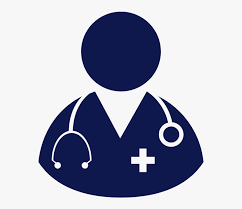
Testimony of Journal of Clinical Otorhinolaryngology: work with your Reviews has been a educational and constructive experience. The editorial office were very helpful and supportive. It was a pleasure to contribute to your Journal.

Dr. Bernard Terkimbi Utoo, I am happy to publish my scientific work in Journal of Women Health Care and Issues (JWHCI). The manuscript submission was seamless and peer review process was top notch. I was amazed that 4 reviewers worked on the manuscript which made it a highly technical, standard and excellent quality paper. I appreciate the format and consideration for the APC as well as the speed of publication. It is my pleasure to continue with this scientific relationship with the esteem JWHCI.

This is an acknowledgment for peer reviewers, editorial board of Journal of Clinical Research and Reports. They show a lot of consideration for us as publishers for our research article “Evaluation of the different factors associated with side effects of COVID-19 vaccination on medical students, Mutah university, Al-Karak, Jordan”, in a very professional and easy way. This journal is one of outstanding medical journal.
Dear Hao Jiang, to Journal of Nutrition and Food Processing We greatly appreciate the efficient, professional and rapid processing of our paper by your team. If there is anything else we should do, please do not hesitate to let us know. On behalf of my co-authors, we would like to express our great appreciation to editor and reviewers.

As an author who has recently published in the journal "Brain and Neurological Disorders". I am delighted to provide a testimonial on the peer review process, editorial office support, and the overall quality of the journal. The peer review process at Brain and Neurological Disorders is rigorous and meticulous, ensuring that only high-quality, evidence-based research is published. The reviewers are experts in their fields, and their comments and suggestions were constructive and helped improve the quality of my manuscript. The review process was timely and efficient, with clear communication from the editorial office at each stage. The support from the editorial office was exceptional throughout the entire process. The editorial staff was responsive, professional, and always willing to help. They provided valuable guidance on formatting, structure, and ethical considerations, making the submission process seamless. Moreover, they kept me informed about the status of my manuscript and provided timely updates, which made the process less stressful. The journal Brain and Neurological Disorders is of the highest quality, with a strong focus on publishing cutting-edge research in the field of neurology. The articles published in this journal are well-researched, rigorously peer-reviewed, and written by experts in the field. The journal maintains high standards, ensuring that readers are provided with the most up-to-date and reliable information on brain and neurological disorders. In conclusion, I had a wonderful experience publishing in Brain and Neurological Disorders. The peer review process was thorough, the editorial office provided exceptional support, and the journal's quality is second to none. I would highly recommend this journal to any researcher working in the field of neurology and brain disorders.

Dear Agrippa Hilda, Journal of Neuroscience and Neurological Surgery, Editorial Coordinator, I trust this message finds you well. I want to extend my appreciation for considering my article for publication in your esteemed journal. I am pleased to provide a testimonial regarding the peer review process and the support received from your editorial office. The peer review process for my paper was carried out in a highly professional and thorough manner. The feedback and comments provided by the authors were constructive and very useful in improving the quality of the manuscript. This rigorous assessment process undoubtedly contributes to the high standards maintained by your journal.
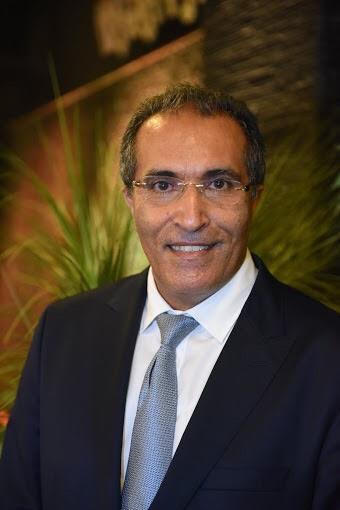
International Journal of Clinical Case Reports and Reviews. I strongly recommend to consider submitting your work to this high-quality journal. The support and availability of the Editorial staff is outstanding and the review process was both efficient and rigorous.
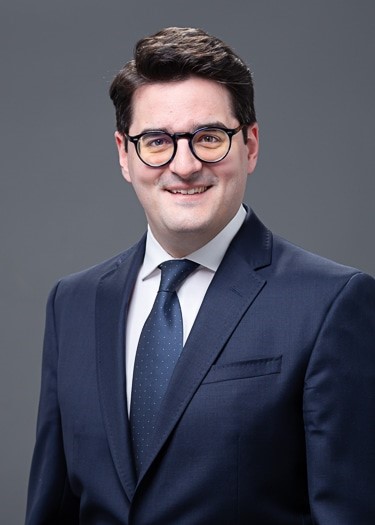
Thank you very much for publishing my Research Article titled “Comparing Treatment Outcome Of Allergic Rhinitis Patients After Using Fluticasone Nasal Spray And Nasal Douching" in the Journal of Clinical Otorhinolaryngology. As Medical Professionals we are immensely benefited from study of various informative Articles and Papers published in this high quality Journal. I look forward to enriching my knowledge by regular study of the Journal and contribute my future work in the field of ENT through the Journal for use by the medical fraternity. The support from the Editorial office was excellent and very prompt. I also welcome the comments received from the readers of my Research Article.

Dear Erica Kelsey, Editorial Coordinator of Cancer Research and Cellular Therapeutics Our team is very satisfied with the processing of our paper by your journal. That was fast, efficient, rigorous, but without unnecessary complications. We appreciated the very short time between the submission of the paper and its publication on line on your site.

I am very glad to say that the peer review process is very successful and fast and support from the Editorial Office. Therefore, I would like to continue our scientific relationship for a long time. And I especially thank you for your kindly attention towards my article. Have a good day!

"We recently published an article entitled “Influence of beta-Cyclodextrins upon the Degradation of Carbofuran Derivatives under Alkaline Conditions" in the Journal of “Pesticides and Biofertilizers” to show that the cyclodextrins protect the carbamates increasing their half-life time in the presence of basic conditions This will be very helpful to understand carbofuran behaviour in the analytical, agro-environmental and food areas. We greatly appreciated the interaction with the editor and the editorial team; we were particularly well accompanied during the course of the revision process, since all various steps towards publication were short and without delay".

I would like to express my gratitude towards you process of article review and submission. I found this to be very fair and expedient. Your follow up has been excellent. I have many publications in national and international journal and your process has been one of the best so far. Keep up the great work.

We are grateful for this opportunity to provide a glowing recommendation to the Journal of Psychiatry and Psychotherapy. We found that the editorial team were very supportive, helpful, kept us abreast of timelines and over all very professional in nature. The peer review process was rigorous, efficient and constructive that really enhanced our article submission. The experience with this journal remains one of our best ever and we look forward to providing future submissions in the near future.

I am very pleased to serve as EBM of the journal, I hope many years of my experience in stem cells can help the journal from one way or another. As we know, stem cells hold great potential for regenerative medicine, which are mostly used to promote the repair response of diseased, dysfunctional or injured tissue using stem cells or their derivatives. I think Stem Cell Research and Therapeutics International is a great platform to publish and share the understanding towards the biology and translational or clinical application of stem cells.

I would like to give my testimony in the support I have got by the peer review process and to support the editorial office where they were of asset to support young author like me to be encouraged to publish their work in your respected journal and globalize and share knowledge across the globe. I really give my great gratitude to your journal and the peer review including the editorial office.
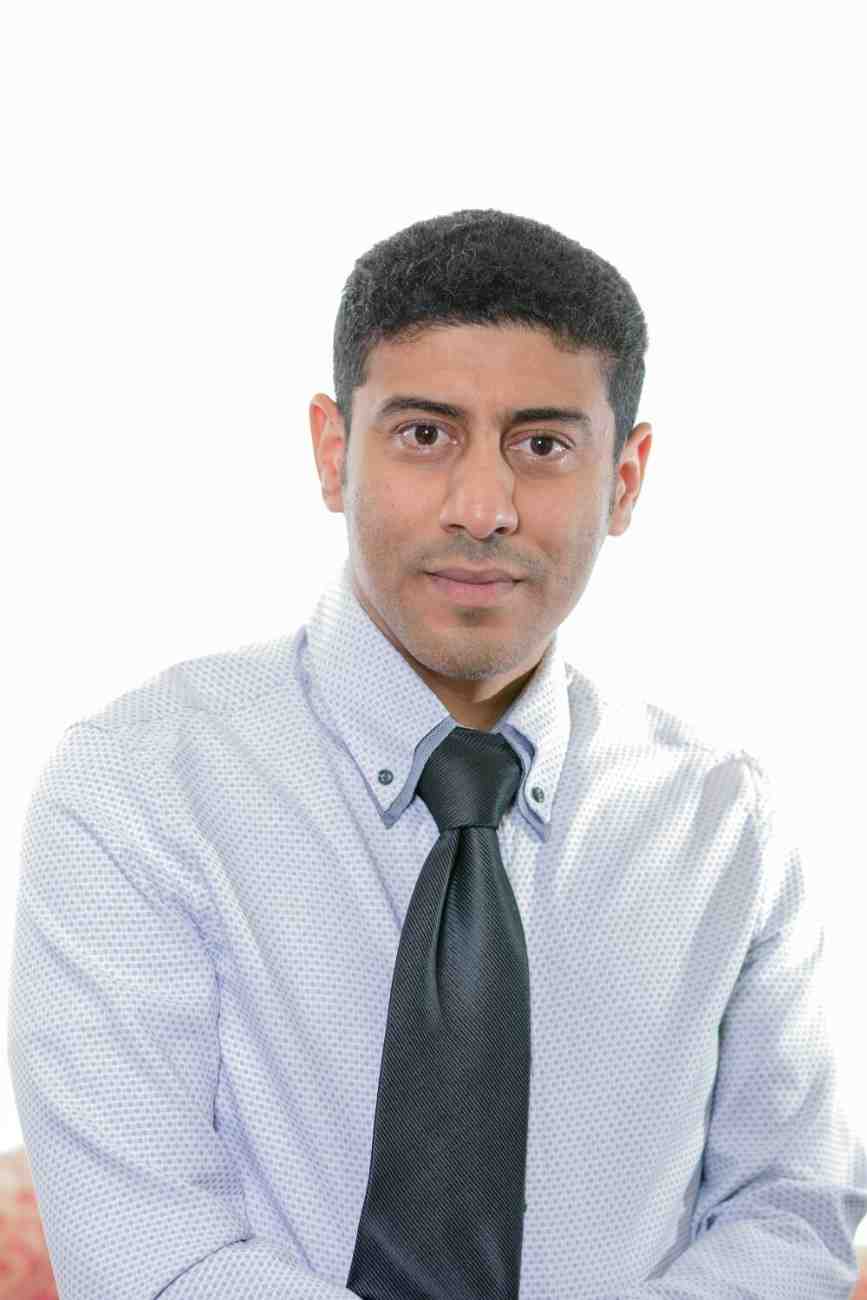
I am delighted to publish our manuscript entitled "A Perspective on Cocaine Induced Stroke - Its Mechanisms and Management" in the Journal of Neuroscience and Neurological Surgery. The peer review process, support from the editorial office, and quality of the journal are excellent. The manuscripts published are of high quality and of excellent scientific value. I recommend this journal very much to colleagues.
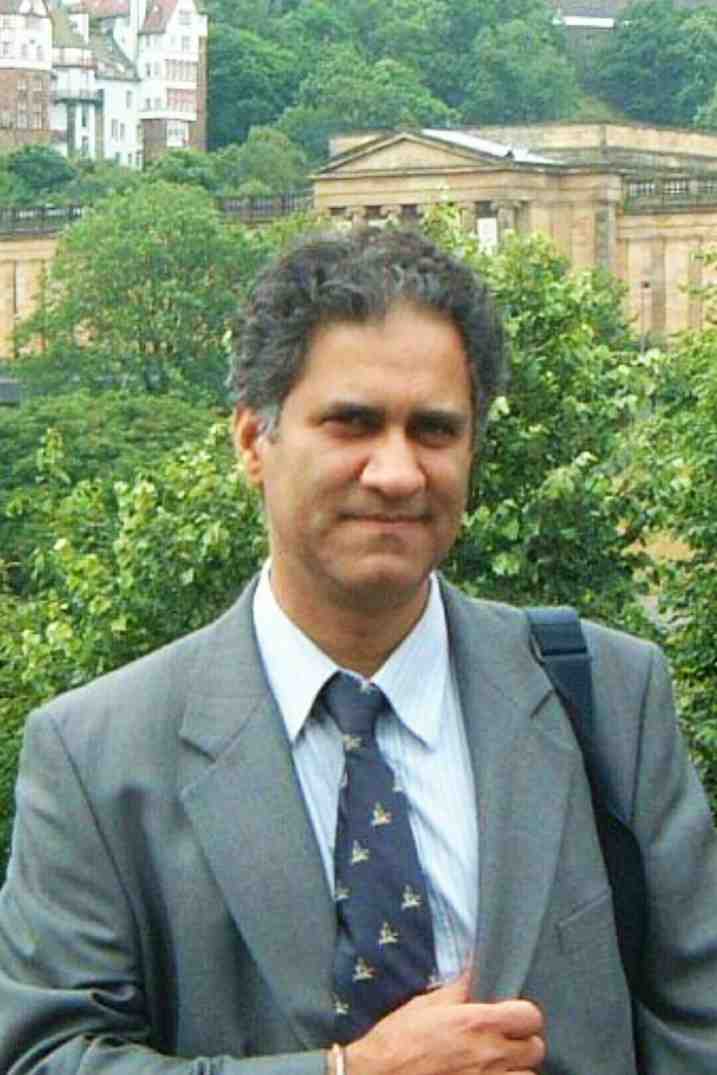
Dr.Tania Muñoz, My experience as researcher and author of a review article in The Journal Clinical Cardiology and Interventions has been very enriching and stimulating. The editorial team is excellent, performs its work with absolute responsibility and delivery. They are proactive, dynamic and receptive to all proposals. Supporting at all times the vast universe of authors who choose them as an option for publication. The team of review specialists, members of the editorial board, are brilliant professionals, with remarkable performance in medical research and scientific methodology. Together they form a frontline team that consolidates the JCCI as a magnificent option for the publication and review of high-level medical articles and broad collective interest. I am honored to be able to share my review article and open to receive all your comments.

“The peer review process of JPMHC is quick and effective. Authors are benefited by good and professional reviewers with huge experience in the field of psychology and mental health. The support from the editorial office is very professional. People to contact to are friendly and happy to help and assist any query authors might have. Quality of the Journal is scientific and publishes ground-breaking research on mental health that is useful for other professionals in the field”.
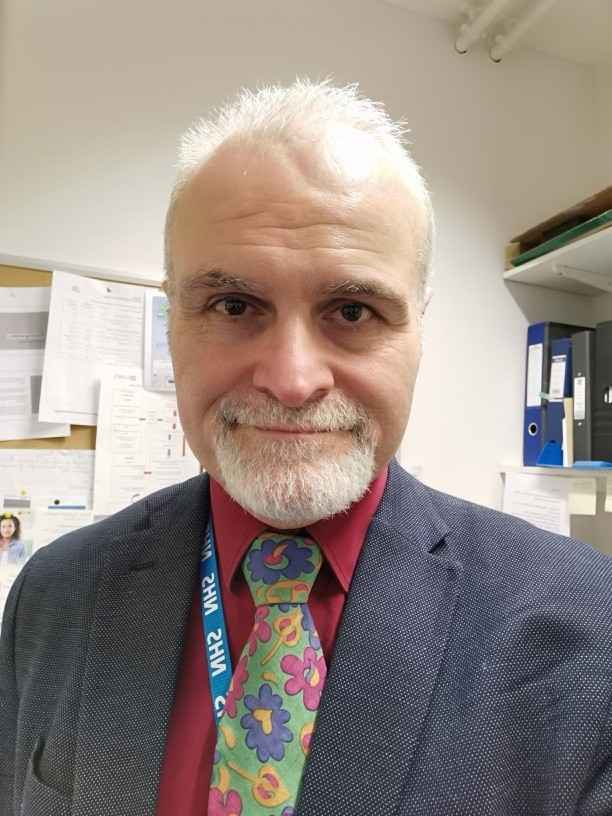
Dear editorial department: On behalf of our team, I hereby certify the reliability and superiority of the International Journal of Clinical Case Reports and Reviews in the peer review process, editorial support, and journal quality. Firstly, the peer review process of the International Journal of Clinical Case Reports and Reviews is rigorous, fair, transparent, fast, and of high quality. The editorial department invites experts from relevant fields as anonymous reviewers to review all submitted manuscripts. These experts have rich academic backgrounds and experience, and can accurately evaluate the academic quality, originality, and suitability of manuscripts. The editorial department is committed to ensuring the rigor of the peer review process, while also making every effort to ensure a fast review cycle to meet the needs of authors and the academic community. Secondly, the editorial team of the International Journal of Clinical Case Reports and Reviews is composed of a group of senior scholars and professionals with rich experience and professional knowledge in related fields. The editorial department is committed to assisting authors in improving their manuscripts, ensuring their academic accuracy, clarity, and completeness. Editors actively collaborate with authors, providing useful suggestions and feedback to promote the improvement and development of the manuscript. We believe that the support of the editorial department is one of the key factors in ensuring the quality of the journal. Finally, the International Journal of Clinical Case Reports and Reviews is renowned for its high- quality articles and strict academic standards. The editorial department is committed to publishing innovative and academically valuable research results to promote the development and progress of related fields. The International Journal of Clinical Case Reports and Reviews is reasonably priced and ensures excellent service and quality ratio, allowing authors to obtain high-level academic publishing opportunities in an affordable manner. I hereby solemnly declare that the International Journal of Clinical Case Reports and Reviews has a high level of credibility and superiority in terms of peer review process, editorial support, reasonable fees, and journal quality. Sincerely, Rui Tao.

Clinical Cardiology and Cardiovascular Interventions I testity the covering of the peer review process, support from the editorial office, and quality of the journal.
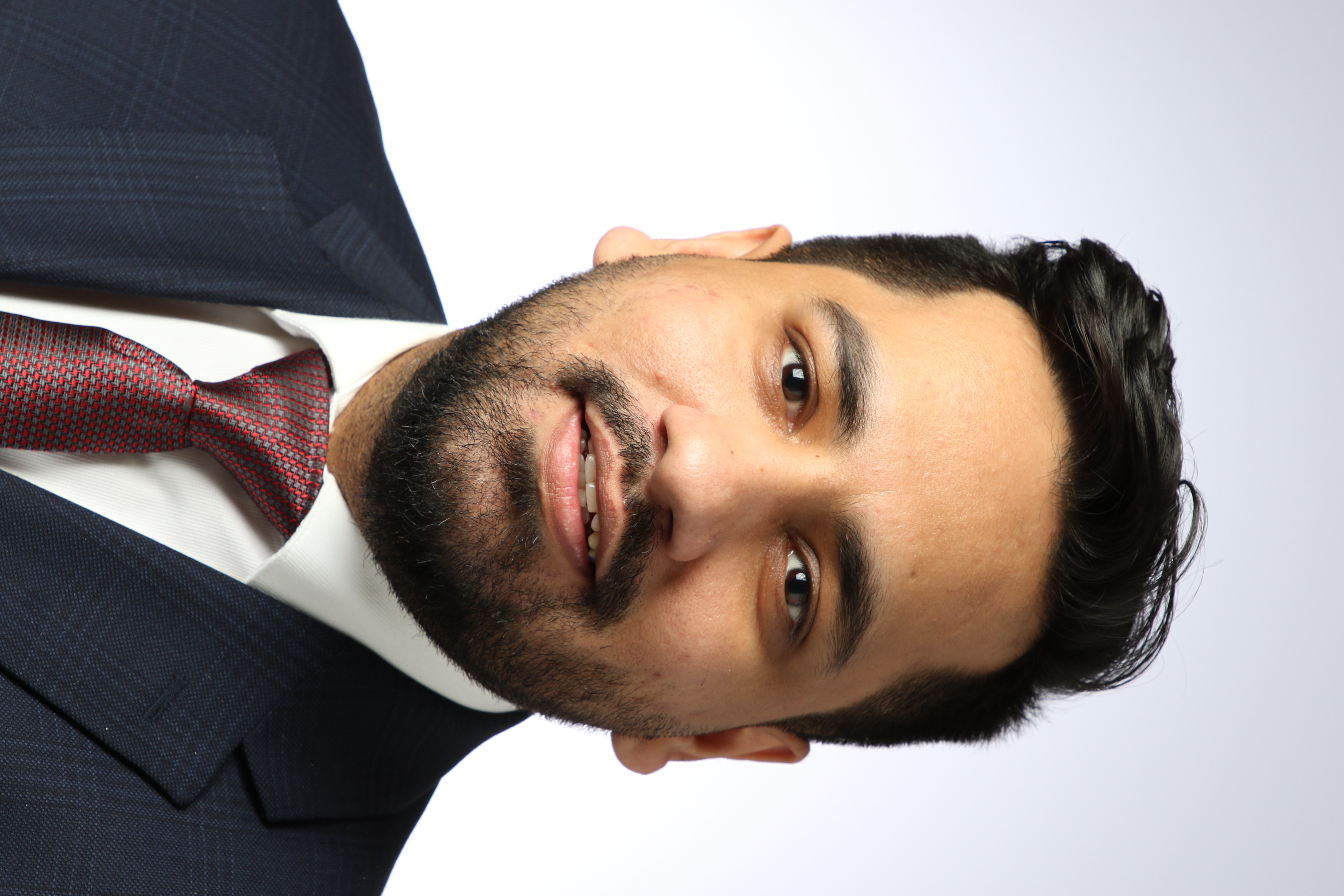
Clinical Cardiology and Cardiovascular Interventions, we deeply appreciate the interest shown in our work and its publication. It has been a true pleasure to collaborate with you. The peer review process, as well as the support provided by the editorial office, have been exceptional, and the quality of the journal is very high, which was a determining factor in our decision to publish with you.
The peer reviewers process is quick and effective, the supports from editorial office is excellent, the quality of journal is high. I would like to collabroate with Internatioanl journal of Clinical Case Reports and Reviews journal clinically in the future time.

Clinical Cardiology and Cardiovascular Interventions, I would like to express my sincerest gratitude for the trust placed in our team for the publication in your journal. It has been a true pleasure to collaborate with you on this project. I am pleased to inform you that both the peer review process and the attention from the editorial coordination have been excellent. Your team has worked with dedication and professionalism to ensure that your publication meets the highest standards of quality. We are confident that this collaboration will result in mutual success, and we are eager to see the fruits of this shared effort.

Dear Dr. Jessica Magne, Editorial Coordinator 0f Clinical Cardiology and Cardiovascular Interventions, I hope this message finds you well. I want to express my utmost gratitude for your excellent work and for the dedication and speed in the publication process of my article titled "Navigating Innovation: Qualitative Insights on Using Technology for Health Education in Acute Coronary Syndrome Patients." I am very satisfied with the peer review process, the support from the editorial office, and the quality of the journal. I hope we can maintain our scientific relationship in the long term.
Dear Monica Gissare, - Editorial Coordinator of Nutrition and Food Processing. ¨My testimony with you is truly professional, with a positive response regarding the follow-up of the article and its review, you took into account my qualities and the importance of the topic¨.

Dear Dr. Jessica Magne, Editorial Coordinator 0f Clinical Cardiology and Cardiovascular Interventions, The review process for the article “The Handling of Anti-aggregants and Anticoagulants in the Oncologic Heart Patient Submitted to Surgery” was extremely rigorous and detailed. From the initial submission to the final acceptance, the editorial team at the “Journal of Clinical Cardiology and Cardiovascular Interventions” demonstrated a high level of professionalism and dedication. The reviewers provided constructive and detailed feedback, which was essential for improving the quality of our work. Communication was always clear and efficient, ensuring that all our questions were promptly addressed. The quality of the “Journal of Clinical Cardiology and Cardiovascular Interventions” is undeniable. It is a peer-reviewed, open-access publication dedicated exclusively to disseminating high-quality research in the field of clinical cardiology and cardiovascular interventions. The journal's impact factor is currently under evaluation, and it is indexed in reputable databases, which further reinforces its credibility and relevance in the scientific field. I highly recommend this journal to researchers looking for a reputable platform to publish their studies.

Dear Editorial Coordinator of the Journal of Nutrition and Food Processing! "I would like to thank the Journal of Nutrition and Food Processing for including and publishing my article. The peer review process was very quick, movement and precise. The Editorial Board has done an extremely conscientious job with much help, valuable comments and advices. I find the journal very valuable from a professional point of view, thank you very much for allowing me to be part of it and I would like to participate in the future!”

Dealing with The Journal of Neurology and Neurological Surgery was very smooth and comprehensive. The office staff took time to address my needs and the response from editors and the office was prompt and fair. I certainly hope to publish with this journal again.Their professionalism is apparent and more than satisfactory. Susan Weiner
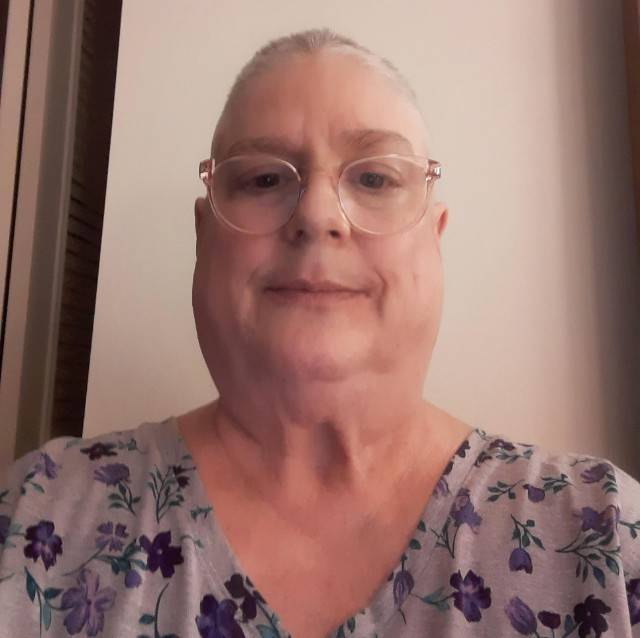
My Testimonial Covering as fellowing: Lin-Show Chin. The peer reviewers process is quick and effective, the supports from editorial office is excellent, the quality of journal is high. I would like to collabroate with Internatioanl journal of Clinical Case Reports and Reviews.

My experience publishing in Psychology and Mental Health Care was exceptional. The peer review process was rigorous and constructive, with reviewers providing valuable insights that helped enhance the quality of our work. The editorial team was highly supportive and responsive, making the submission process smooth and efficient. The journal's commitment to high standards and academic rigor makes it a respected platform for quality research. I am grateful for the opportunity to publish in such a reputable journal.
My experience publishing in International Journal of Clinical Case Reports and Reviews was exceptional. I Come forth to Provide a Testimonial Covering the Peer Review Process and the editorial office for the Professional and Impartial Evaluation of the Manuscript.

I would like to offer my testimony in the support. I have received through the peer review process and support the editorial office where they are to support young authors like me, encourage them to publish their work in your esteemed journals, and globalize and share knowledge globally. I really appreciate your journal, peer review, and editorial office.
Dear Agrippa Hilda- Editorial Coordinator of Journal of Neuroscience and Neurological Surgery, "The peer review process was very quick and of high quality, which can also be seen in the articles in the journal. The collaboration with the editorial office was very good."

I would like to express my sincere gratitude for the support and efficiency provided by the editorial office throughout the publication process of my article, “Delayed Vulvar Metastases from Rectal Carcinoma: A Case Report.” I greatly appreciate the assistance and guidance I received from your team, which made the entire process smooth and efficient. The peer review process was thorough and constructive, contributing to the overall quality of the final article. I am very grateful for the high level of professionalism and commitment shown by the editorial staff, and I look forward to maintaining a long-term collaboration with the International Journal of Clinical Case Reports and Reviews.
To Dear Erin Aust, I would like to express my heartfelt appreciation for the opportunity to have my work published in this esteemed journal. The entire publication process was smooth and well-organized, and I am extremely satisfied with the final result. The Editorial Team demonstrated the utmost professionalism, providing prompt and insightful feedback throughout the review process. Their clear communication and constructive suggestions were invaluable in enhancing my manuscript, and their meticulous attention to detail and dedication to quality are truly commendable. Additionally, the support from the Editorial Office was exceptional. From the initial submission to the final publication, I was guided through every step of the process with great care and professionalism. The team's responsiveness and assistance made the entire experience both easy and stress-free. I am also deeply impressed by the quality and reputation of the journal. It is an honor to have my research featured in such a respected publication, and I am confident that it will make a meaningful contribution to the field.

"I am grateful for the opportunity of contributing to [International Journal of Clinical Case Reports and Reviews] and for the rigorous review process that enhances the quality of research published in your esteemed journal. I sincerely appreciate the time and effort of your team who have dedicatedly helped me in improvising changes and modifying my manuscript. The insightful comments and constructive feedback provided have been invaluable in refining and strengthening my work".

I thank the ‘Journal of Clinical Research and Reports’ for accepting this article for publication. This is a rigorously peer reviewed journal which is on all major global scientific data bases. I note the review process was prompt, thorough and professionally critical. It gave us an insight into a number of important scientific/statistical issues. The review prompted us to review the relevant literature again and look at the limitations of the study. The peer reviewers were open, clear in the instructions and the editorial team was very prompt in their communication. This journal certainly publishes quality research articles. I would recommend the journal for any future publications.
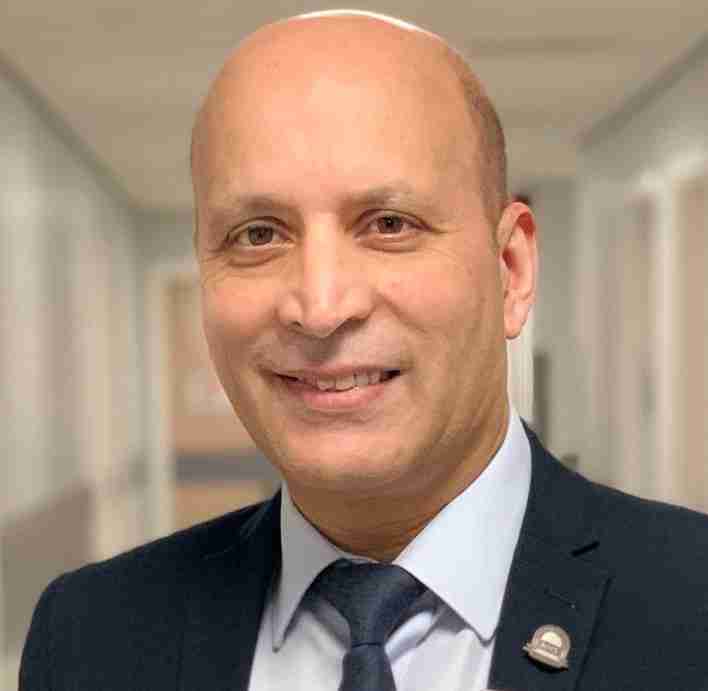
Dear Jessica Magne, with gratitude for the joint work. Fast process of receiving and processing the submitted scientific materials in “Clinical Cardiology and Cardiovascular Interventions”. High level of competence of the editors with clear and correct recommendations and ideas for enriching the article.

We found the peer review process quick and positive in its input. The support from the editorial officer has been very agile, always with the intention of improving the article and taking into account our subsequent corrections.
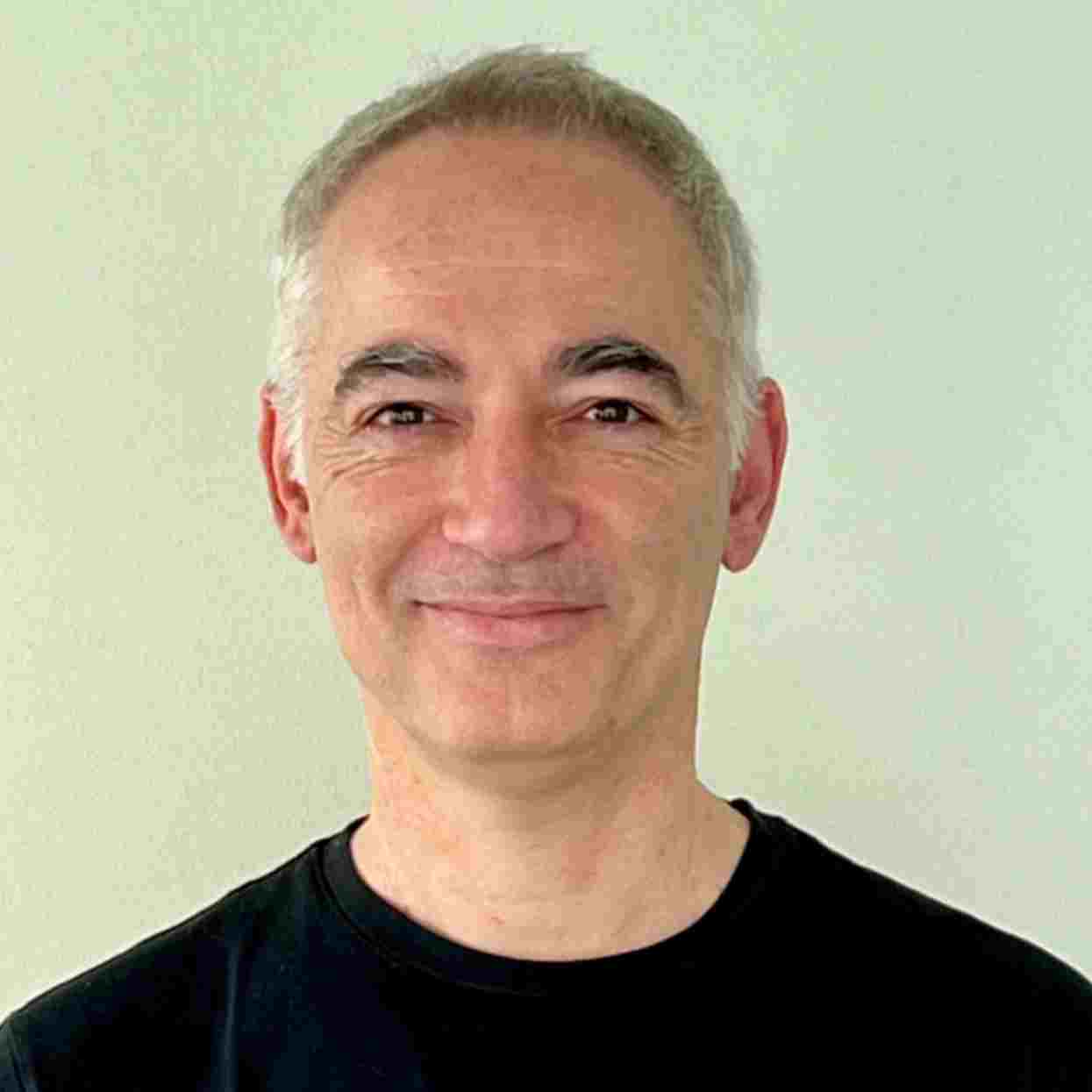
My article, titled 'No Way Out of the Smartphone Epidemic Without Considering the Insights of Brain Research,' has been republished in the International Journal of Clinical Case Reports and Reviews. The review process was seamless and professional, with the editors being both friendly and supportive. I am deeply grateful for their efforts.
To Dear Erin Aust – Editorial Coordinator of Journal of General Medicine and Clinical Practice! I declare that I am absolutely satisfied with your work carried out with great competence in following the manuscript during the various stages from its receipt, during the revision process to the final acceptance for publication. Thank Prof. Elvira Farina

Dear Jessica, and the super professional team of the ‘Clinical Cardiology and Cardiovascular Interventions’ I am sincerely grateful to the coordinated work of the journal team for the no problem with the submission of my manuscript: “Cardiometabolic Disorders in A Pregnant Woman with Severe Preeclampsia on the Background of Morbid Obesity (Case Report).” The review process by 5 experts was fast, and the comments were professional, which made it more specific and academic, and the process of publication and presentation of the article was excellent. I recommend that my colleagues publish articles in this journal, and I am interested in further scientific cooperation. Sincerely and best wishes, Dr. Oleg Golyanovskiy.
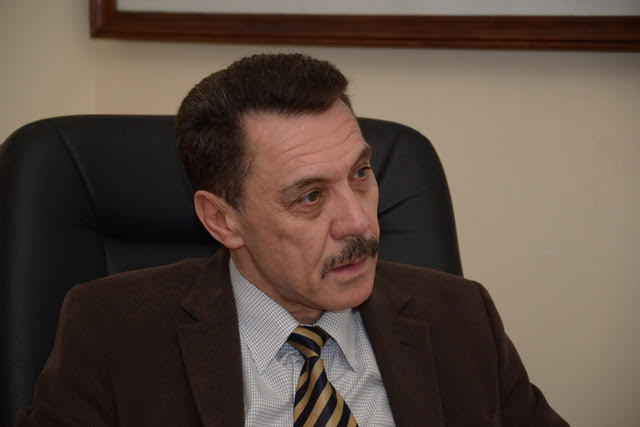
Dear Ashley Rosa, Editorial Coordinator of the journal - Psychology and Mental Health Care. " The process of obtaining publication of my article in the Psychology and Mental Health Journal was positive in all areas. The peer review process resulted in a number of valuable comments, the editorial process was collaborative and timely, and the quality of this journal has been quickly noticed, resulting in alternative journals contacting me to publish with them." Warm regards, Susan Anne Smith, PhD. Australian Breastfeeding Association.

Dear Jessica Magne, Editorial Coordinator, Clinical Cardiology and Cardiovascular Interventions, Auctores Publishing LLC. I appreciate the journal (JCCI) editorial office support, the entire team leads were always ready to help, not only on technical front but also on thorough process. Also, I should thank dear reviewers’ attention to detail and creative approach to teach me and bring new insights by their comments. Surely, more discussions and introduction of other hemodynamic devices would provide better prevention and management of shock states. Your efforts and dedication in presenting educational materials in this journal are commendable. Best wishes from, Farahnaz Fallahian.
Dear Maria Emerson, Editorial Coordinator, International Journal of Clinical Case Reports and Reviews, Auctores Publishing LLC. I am delighted to have published our manuscript, "Acute Colonic Pseudo-Obstruction (ACPO): A rare but serious complication following caesarean section." I want to thank the editorial team, especially Maria Emerson, for their prompt review of the manuscript, quick responses to queries, and overall support. Yours sincerely Dr. Victor Olagundoye.
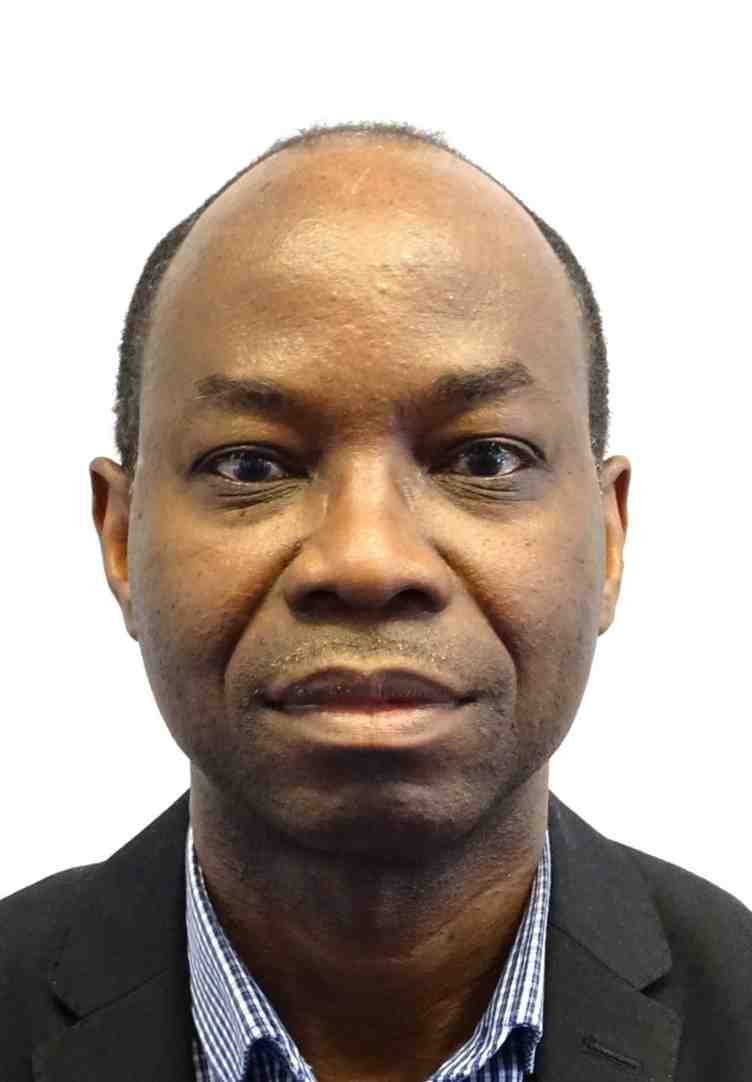
Dear Ashley Rosa, Editorial Coordinator, International Journal of Clinical Case Reports and Reviews. Many thanks for publishing this manuscript after I lost confidence the editors were most helpful, more than other journals Best wishes from, Susan Anne Smith, PhD. Australian Breastfeeding Association.

Dear Agrippa Hilda, Editorial Coordinator, Journal of Neuroscience and Neurological Surgery. The entire process including article submission, review, revision, and publication was extremely easy. The journal editor was prompt and helpful, and the reviewers contributed to the quality of the paper. Thank you so much! Eric Nussbaum, MD
Dr Hala Al Shaikh This is to acknowledge that the peer review process for the article ’ A Novel Gnrh1 Gene Mutation in Four Omani Male Siblings, Presentation and Management ’ sent to the International Journal of Clinical Case Reports and Reviews was quick and smooth. The editorial office was prompt with easy communication.

Dear Erin Aust, Editorial Coordinator, Journal of General Medicine and Clinical Practice. We are pleased to share our experience with the “Journal of General Medicine and Clinical Practice”, following the successful publication of our article. The peer review process was thorough and constructive, helping to improve the clarity and quality of the manuscript. We are especially thankful to Ms. Erin Aust, the Editorial Coordinator, for her prompt communication and continuous support throughout the process. Her professionalism ensured a smooth and efficient publication experience. The journal upholds high editorial standards, and we highly recommend it to fellow researchers seeking a credible platform for their work. Best wishes By, Dr. Rakhi Mishra.
